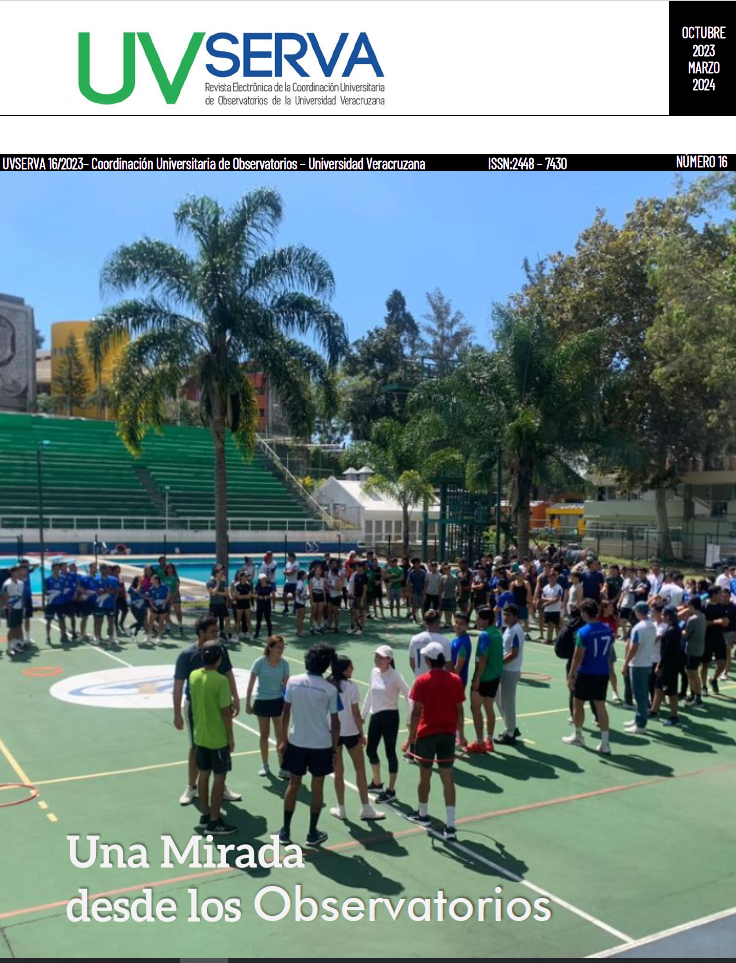Abstract
The results presented are from the study Anxiety, Depression, Lifestyles, and Wellbeing in the Current Sociocultural Context, conducted in the year 2022, focusing particularly on the variables of anxiety and depression. This study builds on previous research carried out during the COVID-19 pandemic in the years 2020 and 2021, where the conditions of social distancing had an impact on people's lives, leading to changes behaviors to cope with the contingency. The data presented were obtained at two points in the year 2022 (March-April with 694 participants and October- November with 367 individuals). The results indicate that symptoms of anxiety and depression remain at high levels, posing a risk to mental health, however, the symptoms of both disorders decreased in the second semester of the year. Due to the specific characteristics of the study, it is not possible to generalize the data, but they can be used as a reference for the development of intervention strategies that positively influence the population's wellbeing.
References
Arellanez-Hernández, J.L., Beltrán-Guerra, L.F., Cortés-Flores, E., Vázquez-Sánchez, M.S. (2022). Síntomas de ansiedad y depresión en adultos-jóvenes veracruzanos en el contexto de la contingencia por COVID-19. Datos del primer y segundo semestre del 2021. Revista Uvserva, 14, 34-42 https://doi.org/10.25009/uvs.vi14.2893
Asociación Médica Mundial (2013). Declaración de Helsinki de la AMM. Principios éticos para las investigaciones médicas en Seres Humanos. https://www.wma.net/es/policies-post/declaracion-de-helsinki-de-la-amm-principios-eticos-para-las-investigaciones-medicas-en-seres-humanos/
Balanza Galindo, Serafín, Morales Moreno, Isabel, & Guerrero Muñoz, Joaquín. (2009). Prevalencia de ansiedad y depresión en una población de estudiantes universitarios: Factores Académicos y Sociofamiliares Asociados. Clínica y Salud, 20(2), 177-187. Recuperado en 03 de agosto de 2023, de http://scielo.isciii.es/scielo.php?script=sci_arttext&pid=S1130-52742009000200006&lng=es&tlng=es
Baptiste, B. L., Lasso, C. A. y Bello, J. C. (2013). Presentación artículos de datos (Data Papers). Biota Colombiana, 14(1).
Berenzon, S., Lara, M. A., Robles, R., y Medina-Mora, M. E. (2013). Depresión: estado del conocimiento y la necesidad de políticas públicas y planes de acción en México. Salud pública de México, 55(1), 74-80.
Comisión Económica para América Latina y el Caribe (CEPAL) (2022). Los impactos sociodemográficos de la pandemia de COVID-19 en América Latina y el Caribe. https://repositorio.cepal.org/bitstream/handle/11362/47922/1/S2200159_es.pdf
García-García, A., López-Borrull, A. y Peset, F. (2015). “Data journals: eclosión de nuevas revistas especializadas en datos”. El profesional de la información, 24(6), 845-854. http://dx.doi.org/10.3145/epi.2015.nov.17
Goldberg, D., Bridges, K., Duncan-Jones, P., et al. (1989). Detección de la ansiedad y la depresión en el marco de la medicina general. Br Med J (ed. esp.), 4(2), 49-53.
Machuca-Martínez, F. (2020). Importance of scientific data and its publication as data paper. Ingeniería y Competitividad, 22(1), 3-3. https://doi.org/10.25100/iyc.v22i1.8843
Montón, C., Pérez Echevarría, M. J., Campos, R., Campayo, G. J. y Lobo, A. (1993). Escalas de ansiedad y depresión de Goldberg. Una guía de entrevista eficaz para la detección del malestar psíquico. Atención primaria, 12, 345-349.
Organización Mundial de la Salud (OMS) (1998). Promoción de la salud. Glosario. https://apps.who.int/iris/bitstream/handle/10665/67246/WHO_HPR_HEP_98.1_spa.pdf;jsessionid=32BDD9C543E44508E31886E7E2754B51?sequence=1
Organización Panamericana de la Salud (OPS) (2023). Una nueva agenda para la salud mental en las Américas. Informe de la Comisión de Alto Nivel sobre Salud Mental y COVID-19 de la Organización Panamericana de la Salud. https://iris.paho.org/handle/10665.2/57504
Pedraza-Aguirre, S., Arellanez-Hernández, J.L., Beltrán-Guerra, L.F., y Romero-Pedraza, E. (2021). Datos sobre la presencia de síntomas de ansiedad y depresión en el contexto de la contingencia por COVID-19 en adultos-jóvenes veracruzanos. Revista Uvserva, 12, 14-23. https://doi.org/10.25009/uvs.vi12.2820
Roa-Martínez, S. M., Vidotti, S. A. B. y Santana, R. C. (2017). Estructura propuesta del artículo de datos como publicación científica. Revista Española de Documentación Científica, 40(1): e167. doi: http://dx.doi.org/10.3989/redc.2017.1.1375
Santomauro, D., Herrera, A. M. M., Shadid, J., Zheng, P., Ashbaugh, C., Pigott, D. M., Abbafati, C., Adolph, C., Amlag, J. O., Aravkin, A. Y., Bang-Jensen, B., Bertolacci, G. J., Bloom, S. S., Castellano, R., Castro, E., Chakrabarti, S., Chattopadhyay, J., Cogen, R. M., Collins, J. K., . . . Ferrari, A. J. (2021). Global prevalence and burden of depressive and anxiety disorders in 204 countries and territories in 2020 due to the COVID-19 pandemic. The Lancet, 398(10312), 1700-1712. https://doi.org/10.1016/s0140-6736(21)02143-7
Secretaría de Salud (1983). Reglamento de la Ley General de Salud en Materia de Investigación para la Salud. http://www.salud.gob.mx/unidades/cdi/nom/compi/rlgsmis.html
Secretaría de Salud (2013). Norma Oficial Mexicana NOM-012-SSA3-2012. http://dof.gob.mx/nota_detalle.php?codigo=5284148&fecha=04/01/2013

This work is licensed under a Creative Commons Attribution-NonCommercial 4.0 International License.
Copyright (c) 2023 Jorge Luis Arellanez-Hernández, León Felipe Beltrán-Guerra, Erika Cortés-Flores


